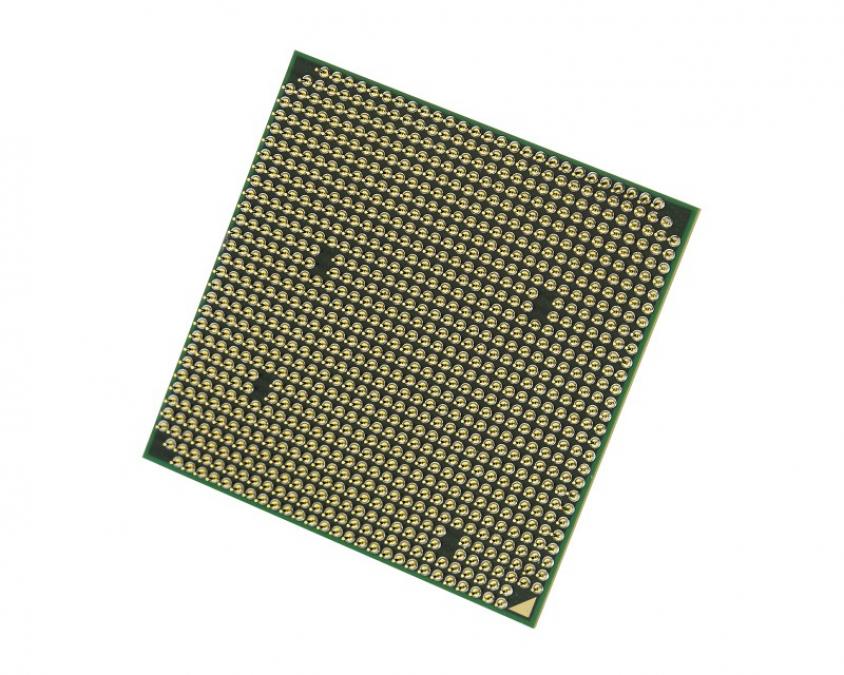AMD FX-8120 review
It's a niche product and Intel's processors are generally faster, but this good-value Bulldozer chip is still the king of multitasking
The FX-8120 is the second “Bulldozer” AMD processor we’ve seen. It’s the model down from the AMD FX-8150 we reviewed in October last year, but we’re reviewing it now as AMD has just cut the price of its Bulldozer processors; the FX-8150 was £195 at launch and is now available for £160, while the FX-8120 has dropped from around £175 at launch to £130.

This makes it cheaper than any Intel Ivy Bridge processor currently available – the nearest equivalent is the 3.1GHz Core i5-3450, which is nearer to £150. For this low price you get some impressive specifications. The FX-8120 has an astonishing eight cores, each of which runs at 3.1GHz. These cores are arranged in four modules of two cores each. Each core within the module has its own level 1 cache, and each two-core module has a block of level 2 cache that the two cores share. All four modules then have access to a pool of level 3 cache.
AMD claims that this modular format is helpful in single-threaded applications; when just a single core is active, it has access to large amounts of both level 2 and level 3 cache. The processor also has a boost function, where it can increase its clock speed dynamically up to 4GHz, as long as there’s enough thermal room. This helps to counteract the problem of lightly-threaded applications not using the processor to its full capacity; with the boost function, when only a small number of cores are active the processor can overclock those cores significantly while the rest are idle, giving you a speed boost without overheating the chip.

The processor’s architecture gave us mixed results in our benchmarks. In the multi-threaded video-encoding and multitasking benchmarks, where you would expect the processor’s eight cores to shine, we saw scores of 66 and 82. This compared poorly with the quad-core Core i5-3450, which managed 105 and 97 in the same tests.
As with the FX-8150, the problem is that few, if any, Windows applications are coded to take advantage of so many cores. We left Windows Task Manager’s Performance application open when running the benchmarks, and during the video-encoding benchmark the total processor usage across all cores hovered between 45% and 55%. By contrast, the quad-core Core i5-3450 sat between 85% and 95% during the same test.
This shows that most Windows applications, such as our Handbrake video encoding program, aren’t optimised for more than four cores. The FX-8120’s score of 79 in our lightly-threaded image-editing test, compared to 118 for the Core i5-3450, shows that the FX-8120 can’t compete with Intel’s chip for core-for-core performance, so if a program isn’t using all the AMD processor’s cores performance will suffer.
Our multitasking test involves encoding a 1080p video while converting high-resolution images and playing back a high-definition video, but even with this much going on the AMD processor only hovered between 57% and 70% usage. By contrast, Intel’s chip was maxed out at all times, leading to a stronger score of 97 compared to the AMD processor’s 89. Overall, the FX-8120 managed a score of 76, far behind the Core i5-3450’s 103. This is also 10 points behind the £160 FX-8150.
Basic Specifications | |
|---|---|
| Processor core | Bulldozer |
| Rating | **** |
| Processor clock speed | 3.1GHz |
| Processor socket | AM3+ |
| Processor process | 32nm |
| Processor number of cores | 8 |
| Processor supported instructions | MMX, SSE 1, 2, 3, 3S, 4.1, 4.2, 4A, X86-64, AMD-V, AES |
| Processor multiplier | x15.5 |
| Processor external bus | 200MHz (HyperTransport) |
| Level 1 cache | 8x 128KB |
| Level 2 cache | 4x 2048KB |
| Processor level 3 cache | 8192 |
| Supported memory type | DDR3 1866 |
| Processor power rating (TDP) | 125W |
| Price | £129 |
| Supplier | http://www.ebuyer.com |
| Details | www.amd.com |










